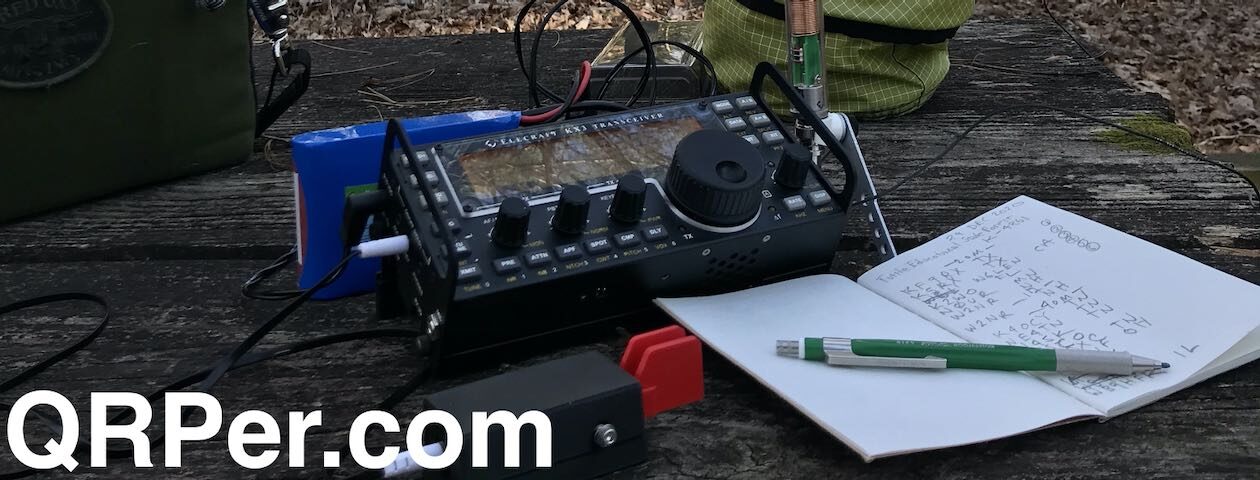On Thursday, January 16, 2025, I had a long list of errands to run in town, including a session with my physical therapist. After all the heavy lifting and chainsawing I’ve done post-Hurricane Helene, my shoulder has been letting me know it’s not too happy. The PT sessions are definitely helping, though—they’re tough, but I’ve noticed big improvements, especially in how quickly my arm recovers after a day of chainsawing.
One upside to these sessions? My PT office is practically next door to the Blue Ridge Parkway. So, as a reward for putting in the work, I’ve decided to treat myself to a POTA activation—either before or after PT—whenever possible.
On this particular Thursday, my schedule dictated that the activation needed to happen beforehand.
To maximize my limited operating time, I went with my go-to minimalist setup: the Elecraft KX2 and AX1 antenna—a truly dynamic duo!
The UMPP-1

This activation was also my first opportunity to test the UMPP-1 mini paddle, a compact and lightweight Morse key designed for portable operations.
Back in December, Peter (GM0EUL) reached out to see if I’d be interested in reviewing one of his 3D-printed paddles. These have been gaining popularity among SOTA and POTA operators in the UK, and after taking a closer look, I decided to order one for myself.
What caught my attention was its small footprint and sturdy design—it looked like a key that could handle the demands of the field while fitting neatly into one of my self-contained SOTA kits.
Pricing with shipping is:
- UK: £50
- EU: 60 Euro
- US: $70 USD
If you live outside these regions, I’d suggest you contact Peter prior to ordering.
I felt like $70 was a very fair price, especially with shipping included. More importantly, I love supporting independent makers in the ham radio world—these small businesses are what keep our hobby innovative and thriving!
Setup
 As always, setting up the KX2 and AX1 was a breeze!
As always, setting up the KX2 and AX1 was a breeze!
 I then connected the UMPP-1 paddles—they’re certainly compact, but they felt great in the hand and quite sturdy. Despite their small size, I’m not too worried about them breaking when packed tightly in a field kit.
I then connected the UMPP-1 paddles—they’re certainly compact, but they felt great in the hand and quite sturdy. Despite their small size, I’m not too worried about them breaking when packed tightly in a field kit.
 The default action and spacing felt just right to me, but Peter also includes a wee Allen wrench in the Altoids-tin-sized metal box that ships with the key, allowing for easy adjustments.
The default action and spacing felt just right to me, but Peter also includes a wee Allen wrench in the Altoids-tin-sized metal box that ships with the key, allowing for easy adjustments.
Gear
Note: All Amazon and eBay links are affiliate links that support QRPer.com at no cost to you.
Radio
- Tufteln KX2 Protective CoverElecraft KX2 with Windcamp X2 Side Rails
- Elecraft KXBT2 Li-Ion Battery Pack
Key
- UMPP-1 Paddles by GM0EUL
- Key cable: Cable Matters 2-Pack Gold-Plated Retractable Aux Cable – 2.5 Feet
Antenna
- Elecraft AX1with 3D-printed Bipod (clip and knob by K6ARK and bipod legs by KE8PTX)
Pack/Case
- Trakke Bannoch Backpack (Note: mine is a discontinued model with G-Hooks.)
- LowePro CS60 Hard Side Case
Log and Pen
Camera/Audio Gear
- DJI OSMO 4 action camera with Joby Telepod Sport Tripod
Creature Comforts
On The Air
 After tuning the KX2, I decided to lower the output power to one watt. Probably not the best idea when using such a wee antenna and being pressed for time—but hey, life’s all about these low-power adventures, right?
After tuning the KX2, I decided to lower the output power to one watt. Probably not the best idea when using such a wee antenna and being pressed for time—but hey, life’s all about these low-power adventures, right?
I hopped on 20 meters and started calling CQ POTA. Continue reading Super Portable POTA: One Watt, One Tiny Key, Big Fun!


















































